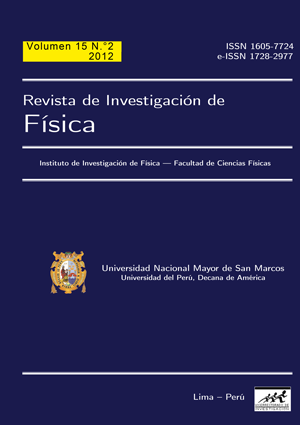Epitaxial growth of YBa2Cu3O7 superconducting layers by chemical solution deposition
DOI:
https://doi.org/10.15381/rif.v15i02.8685Keywords:
YBCO thin layer, SrTiO3 monocrystalline substrate, epitaxial growth of superconducting layers.Abstract
We studied the optimun temperature to favor the epitaxial growth of YBa2Cu3O7 layers using threesintering temperatures of 820, 840 and 860℃, by the chemical solution deposition method in SrTiO3[100] monocrystalline substrates. Surface morphology was obtained by optical imaging, which qualitativelycharacterize the homogeneity and the grain presence along the c-axis. The X-ray diffractionconfirms the preferential epitaxial growth (00l) of the YBa2Cu3O7 crystals, resulting in a higher intensityof the profiles (00l) for the temperature of 860℃. The samples shown superconducting behaviourat critical temperature of 90 K, for the three cases.Downloads
Published
Issue
Section
License
Copyright (c) 2012 Jorge García, Angel Bustamante, Luis De Los Santos, J. C. González, Lizbet León, Jesús Flores, Ana M. Osorio, J. Albino Aguiar

This work is licensed under a Creative Commons Attribution-NonCommercial-ShareAlike 4.0 International License.
THE AUTHORS RETAIN THEIR RIGHTS:
a. The authors retain their trademark and patent rights, as well as any process or procedure described in the article.
b. The authors retain the right to share, copy, distribute, perform and publicly communicate the article published in the Revista de Investigación de Física (for example, place it in an institutional repository or publish it in a book), with an acknowledgment of its initial publication in the Revista de Investigación de Física.
c. The authors retain the right to make a subsequent publication of their work, to use the article or any part of it (for example: a compilation of their works, notes for conferences, thesis, or for a book), provided that they indicate the source. of publication (authors of the work, journal, volume, number and date).






